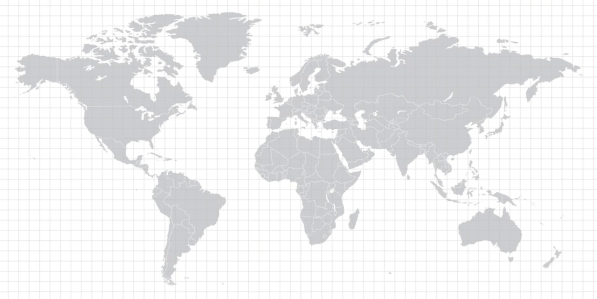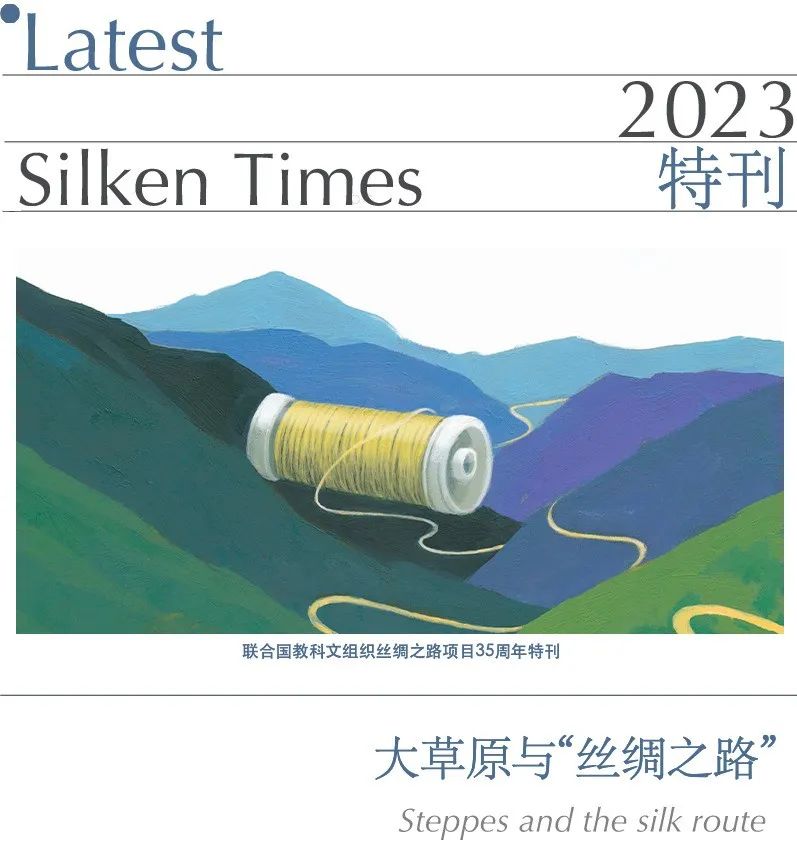深度阅读
Silk Roads | 大草原与“丝绸之路”


C.埃德蒙德·博斯沃思
C. Edmund Bosworth
与M.C.阿西莫夫共同编纂《中亚文明史》第四卷
撒马尔罕、布哈拉、赫拉特……那些让人魂牵梦绕的城市,成吉思汗、帖木儿、阿克巴……那些曾经创造历史的风云人物,阿维森纳、海亚姆、乌鲁伯格……那些改变了人们世界观的思想家,千古以来,所有这些名字都镌刻在同一片土地上——中亚。这里并非古代的某个具体地区,而是不同民族交流互动的永恒十字路口,从里海之滨延伸至中国边境。斯基泰人、匈奴人和契丹人都曾在这片广袤土地上遨游,为亚洲和欧洲的伟大文明奠定了基础。
《中亚文明史》讲述了这片广阔区域的历史。16世纪以前,这里基本上以草原畜牧业为主,只有在绿洲等少数具有得天独厚条件的地方才能开展农业生产。可以想见,这里对于人类生活和文化的原创性贡献是极为有限的。
然而,中亚位于亚洲大陆的心脏地带,独特的地理位置使其成为独一无二的走廊,促成了不同民族、宗教、思想,乃至文化和艺术思潮的流通。在过去的四五千年里,中亚南部和东部自然条件优越的定居区域孕育出了近东、伊朗、印度和中国的多种宗教和文明,对中亚的发展演变产生了深远的影响。
陆地桥梁
纵观有文字可考的历史,西南亚、南亚和东亚多被横亘其间的山脉和沙漠阻隔,中间的草原地带作为陆地桥梁,连接了这些伟大的文明。其中,最突出的例子便是人们所说的“丝绸之路”,这条路线横跨中亚,从东亚一直延伸至伊朗、近东,以及公元前后的希腊拜占庭世界。在这条路上,豪华的纺织品从中国出发,经黎凡特最终运至欧洲:沿反方向,波斯萨珊王朝的银器从伊朗经中亚,可以一直送到遥远的西伯利亚和今俄罗斯,罗马的黄金则经中亚运抵印度西北部。
类似地,希腊罗马文化对阿富汗东部和印度西北部犍陀罗国等地的艺术发展产生了巨大影响。在伊斯兰时代,产自中国的各种奢侈品(例如陶瓷)穿越中亚,经过漫长而危险的陆路到达内沙布尔、雷伊、伊斯法罕、巴格达等大都市,它们都是哈里发及后续王朝的消费中心。这条陆路与横渡印度洋的海上航线形成互补。
在思想领域,旧世界的多种伟大宗教经中亚传播到亚欧大陆的其他地区,例如袄教从伊朗传入河中地区(大致相当于今乌兹别克斯坦)和花剌子模(今乌兹别克斯坦和土库曼斯坦之间)。佛教起源于印度,后来风靡中国和蒙古。与此同时,来自西亚的伊朗粟特商人将基督教聂斯托里教派(景教)和摩尼教从中亚带到了突厥斯坦东部和中国北部。在伊斯兰时代,新兴的对于穆罕默德的信仰从伊朗一直传播到大草原和更遥远的地方,而且通常与当地原有的宗教信仰和习俗(例如萨满教)融为一体。

土库曼斯坦的婚礼队伍。来自 1991 年 7 至 8 月草原丝绸之路考察 © 联合国教科文组织 / Liu Wen Min
封闭与开放
有鉴于此,《中亚文明史》横空出世,旨在说明中亚值得人们细细品读,不仅因为它是人类历史上一个独特的章节,同时也因为干年以来中亚始终是东西方文明的交汇点和往来要冲。
到了我们这个时代,在苏联统治和冷战对抗带来的严密封锁结束之后的20年内,中亚的开放程度得到了显著提升。这里大部分地区地形开阔,早期极易受到外来影响,也便于人口流动。20世纪初,热情高涨的各国探险家、考古学者和艺术专家克服了交通路线的漫长和随之而来的旅途劳顿,向世界展示了中亚各民族创造的文化、文学和艺术瑰宝。
然而,不久之后,意识形态狂热主义和政治动荡基本上关闭了中亚地区通往外部世界的大门,这一关就是几十年。由此造成的后果之一是,没有任何一家学术团体或学术机构——更不用说一名或几名学者——有能力编纂一部中亚通史,上溯史前起源,下至如今中亚在世界史上的地位。直到20世纪80年代,联合国教科文组织汇集了多个领域的主管部门,动员了大约180名作者,启动了《中亚文明史》的编纂工作。近年来出现的中亚共和国当中,四个在民族和语言上具有突厥属性(哈萨克斯坦、吉尔吉斯斯坦、土库曼斯坦和乌兹别克斯坦),另一个更接近伊朗(塔吉克斯坦)。
世纪90年代初,这些国家获得独立后,得以开发利用本国矿产和其他资源,在全球工商领域发挥举足轻重的作用。与此同时,它们也在探索本国文化与周边邻国文化的连续性,例如土耳其与阿塞拜疆,伊朗与阿富汗,都重新建立起了曾被坚决阻止,甚至完全阻断的血脉联系。
希望联合国教科文组织主持编写的这部史书能够证明,数百年来,亚欧大陆上那片曾经被视为鲜为人知、混乱无序的土地已经形成了自己的特性,如今完全能够在世界事务中发挥自身的作用。
*: 1992至2005年,联合国教科文组织陆续出版了多卷《中亚文明史》,这是首次尝试全面勾勒一幅欧亚大陆心脏地带从古至今文化盛衰的画卷。
(本文最初发表于联合国教科文组织《信使》2009年第8期。)


Central Asia, crossroads and meeting place of cultures, has also known periods when it was closed off from the outside world. The History of Civilizations of Central Asia shows that despite ideological barriers, historical and cultural links between inhabitants weave a regional identity.
C. Edmund Bosworth
British historian, Emeritus Professor of Arabic Studies University of Manchester,
co-director with M.C.Asimov of Volume Ⅳ of the History of Civilizationsof Central Asia.
Samarkand, Bukhara, Herat... cities of dreams. GenghisKhan, Tamerlane, Akbar... characters who marked history. Avicenna Khayyam, Ulugh Beg... thinkers who transformed worldviews. These names were inscribed down through the ages on a territory that corresponds not to a specific region of the ancient world but to a permanent crossroads of exchanges between peoples: Central Asia. Since antiquity, Scythians, Hsiung-nu and Khitai roamed this area, from the Caspian Sea to the Chinese border, setting the foundations for the great civilizations of Asia and Europe. The History of Civilizations of Central Asia covers this immense expanse, which, until the 16th century was essentially given over to steppe pastoralism, with agriculture only possible in a few favoured places, like oases. Accordingly, it has given birth to little that has been original to human life and culture.
However, its position as the heartland of the Asian continent has given it a unique position as a corridor for the movement of peoples, religions and ideas, and for cultural and artistic currents. The more favoured, settled regions to the south and east of the core region have, over the past four or five millennia, given birth to several religions and civilizations of the Near East, Iran, India and China. Influences from all these have been significant for the evolution of Central Asia.
A land bridge
The region of the steppes acted as a land bridge between the great civilizations of south-western, southern and eastern Asia, which intervening mountain ranges and deserts have, throughout recorded history, largely separated from each other. Obvious examples here include the so-called “Silk Route” running across Central Asia from East Asia to Iran, the Near East and the Greco-Byzantine worlds of the later pre-Christian and early Christian times, which not only conveyed luxury textiles from China to the Levant and ultimately to Europe but also, in the reverse direction, brought Sasanian silver ware from Iran into Central Asia and as far as Siberia and what is now Russia, and Roman gold to Central Asia and north-western India.
Greco-Roman influences were likewise a major factor in the development of an art like that of Gandhara in eastern Afghanistan and north-western India. In Islamic times, other Chinese luxury goods like ceramics made the long and haza rdous land journey across Central Asia to centres of consumption like Nishapur, Ray, Isfahan, Baghdad and other great cities of the caliphate and its successor states, thus supplementing sea traffic through the Indian Ocean.
In the realm of ideas, various of the great religions of the Old World spread across Central Asia to other parts of the continents, such as Zoroastrianism from Iran into Transoxania (corresponding roughly to modern Uzbekistan) and Khwarazm (between today's Uzbekistan and Turkmenistan). Buddhism went forth from lndia to conquer China and Mongolia. Meanwhile traders from Western Asia, the Iranian Sogdian merchants, brought Nestoria nChristianity and Manichaeism across Central Asia to eastern Turkistan and northern China. In Islamictimes, the new faith of Muhammad was carried from the Iranian lands into the steppes and beyond, often involving a process of syncretism with existing beliefs and practices there,such as those of shamanism.
Closing and opening
The History of Civilizations of Central Asia has thus been designed to show that Central Asia deserves consideration, in its own right, as a distinct entity of human history, and also because ithas functioned as a crossroads and meeting place for the civilizations of East andWest during past millennia.
Passing to our own time,it also provides the historical background for the vastly increased openness of the region during the last two decades or so after the tightly closed period of Soviet domination and Cold War rivalries. The open terrain of much of the region had, in earlier times, always made it accessible to outside influences and movements of peoples. But, at the turn of the 20th century, despite lengthy lines of communication and the consequent slowness of travelling, enthusiastic explorers, archaeologists and art experts from avariety of nations revealed to the world in general the remarkable cultural, literary and artistic treasures of the peoples of Central Asia.
"At the turn of the 20th century, explorers, archaeologists and art experts revealed to the world the remarkable cultural, literary and artistic treasures of the peoples of Central Asia"
But then ideological fanaticisms and political turmoil made Central Asia a region largely closed to the outside world for many decades. One consequence of this was that no academic body or institution, let alone a single scholar or small group of scholars, felt able to undertake the compilation of a general history of the region, from its prehistoric beginnings to its present place in world history, until UNESCO brought together a wide range of authorities in the 1980s and the present history was thus launched, mobilizingsome 180 authors.
Recently we have witnessed the emergence of the four Central Asian republics which are Turkic in ethnos and speech (Kazakhstan, Kyrgyzstan, Turkmenistan and Uzbekistan) and the one which is their Iranian equivalent (Tajikistan). Independent since the early 1990s, these states are now able to exploit their own mine ral and other resources and to play decisive ralesin world commerce and industry; on the other hand they are now discovering continuities of culture with lands on their periphery, such as the Turkish and Azerbaijan republics, the Islamic Republic of Iran and the Islamic Republic of Afghanistan, links which were previously strongly discouraged or even rendered impossible.
It is hoped that this UNESCO History will demonstrate that what was once considered as an amorphous, little-known region of the European-Asian landmass has in fact acquired an identity over recent centuries and is now fully able to play a part in world affairs.
*: The multi-volume History of Civilizations of Central Asia,published by UNESCO between 1992 and 2005, is the first attempt to present a comprehensive picture of the cultures that flourished and vanished at the heart of the Eurasian continent from the dawn of civilizationto the present day.
(This article was originally published in The UNESCO Courier N°8-2009)
©️该文章及图片版权归联合国教科文《信使》杂志所有
部分图片来自 Shutterstock
欢迎分享到朋友圈
转载及合作请联系我们
wechat.unescocourier@gmail.com
